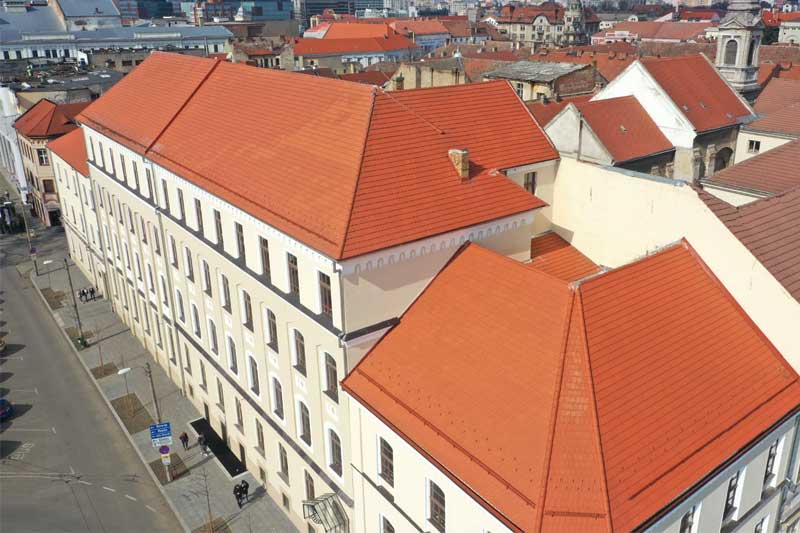Description
The building was erected more than a hundred years ago and originally housed a convent school. I.C.Bratianu College is a representative educational establishment with a tradition for the city of Timișoara and Timișș county. Given that this building is located in the centre of Timisoara, P-ta Iancu Huniade, nr. 2. with an architecture that reminds us of the history of this city, the rehabilitation of this objective will be representative for the whole area. Translated with DeepL.com (free version)
The building is included in class II “buildings of special importance” – buildings of national heritage, being a historic building that is included in the list of national historic monuments, “Timișoara Citadel” district (LMI code 2010, TM-II-s-A-06095), I.C. Brătianu College being in the 33rd block.
The first building, (Iancu Huniade Square at the corner of L. Blaga Street) was built in 1746, as housing for the Salt Office officials, then the headquarters of the Salt Chamber Office. The building in Huniade Square was erected in 1746 and functioned as a Salt Depot and Salt Chamber Office. It was demolished in 1876 and rebuilt in 1900 (1905) and was used as the City Girls’ School, and from 1905 as the Girls’ School of the Order of Notre Dame, and later as the High School of Light Industry, MIU High School.
The work will include the replacement of the roof covering of the buildings by completely removing the existing roof covering in order to replace it with the same type of materials as the current ones (tile, profiled ceramic, unglazed); the complete replacement of the supporting elements of the roof covering, the detailed inspection of the structural elements of the roof covering and the replacement/repair of damaged ones (these will be identified directly on site); replacement of guards, gutters, gutters with new ones made of matt galvanised sheet metal; detailed inspection of the roof eaves elements to detect damaged elements in order to replace them; removal of the plaster from the chimneys (area above the roof) and cleaning of the masonry joints and restoration of the chimney finishes; local repairs to the masonry gables of the bridge (injection of cracks, etc.). ); fireproofing and protecting the timber framing elements (with anti-mildew, anti-mould, anti-fungal solutions);
Regarding the facade,the works include the removal of the exterior plaster of the exterior walls of the buildings, cleaning of the joints, restoration of the plaster and finishes (respecting the current architecture) with materials compatible with the historical value of the building and according to the proposals of the restoring architect, restoration of the architectural decoration elements identical to the existing ones, injection of the cracks in the masonry of the walls with materials compatible with the restoration of the old masonry, and large cracks (over 3 mm) will be “sewn” beforehand with metal plugs/staples and injected in turn, the base of the facades will be covered, cleaning the joints in the masonry and replastering the plinth with hydraulic lime mortar (which allows water to evaporate from the masonry) or with special materials compatible with the age of the buildings and injecting the cracks in the plinth masonry into the pre-cast concrete, replacing the facade joinery (windows and external doors) with new thermo-panel type joinery made of wood or laminated wood.

